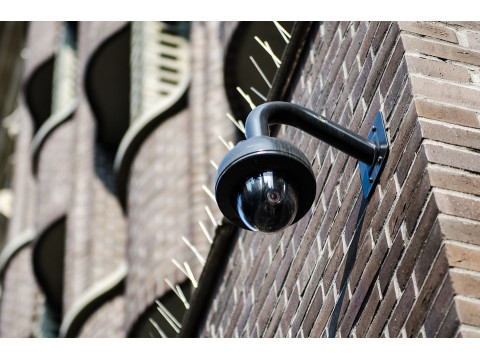Bank Surveillance Systems
Modern banking operations rely on highly secure and efficient surveillance systems to maintain trust and ensure the safety of financial assets. These systems provide continuous monitoring, advanced video analytics, and centralized control, making them indispensable tools for bank security management.
Core Features of Bank Surveillance Systems
1. Uninterrupted Reliability
- Server Stability: Use of Linux-based servers minimizes vulnerabilities and ensures consistent performance compared to traditional systems.
- Power Backup: Uninterrupted Power Supply (UPS) units and batteries are essential to maintain continuous operation during outages.
2. Proactive System Monitoring
- Advanced diagnostics alert users about issues like storage capacity or equipment malfunctions, ensuring timely maintenance.
- Outsourcing technical support enhances system efficiency and reduces operational burdens.
Advanced Capabilities with IP Cameras
High-Resolution Imaging
- Modern IP cameras deliver crystal-clear images, even in low-light conditions, which is vital for indoor areas like vaults and teller stations.
Smart Analytics
- Features like Wide Dynamic Range (WDR) enhance clarity in high-contrast lighting conditions.
- Video search and anomaly detection save time and improve investigation accuracy.
Ease of Integration
- Hybrid systems enable seamless upgrades to existing analog setups, blending traditional and modern technologies without overloading resources.
Benefits of Centralized Monitoring
Efficiency Across Branches
- Centralized systems collect and analyze data from multiple locations, streamlining operations and improving response times.
- Consolidated reporting aids in detecting patterns of fraud or misconduct across various branches.
Enhanced Security Response
- Real-time alerts from integrated systems improve incident response, reducing risks associated with unauthorized access or fraudulent activities.
Applications of Bank Surveillance Systems
1. Fraud Prevention
- Detect unauthorized ATM skimming devices or monitor suspicious transactions with time-stamped video footage.
- Identify fraudulent withdrawals or attempts to damage bank property.
2. Data-Driven Insights
- Analyze customer flow to optimize service desk allocation.
- Use recorded data to assess the effectiveness of marketing campaigns or branch layouts.
3. Employee Monitoring
- Evaluate staff performance and ensure compliance with service standards.
Key Considerations for Bank Surveillance
1. Scalability and Compatibility
- Choose systems that support backward compatibility to integrate seamlessly with older equipment.
2. Durability and Maintenance
- Equipment should be robust enough to endure operational demands and allow for on-the-spot repairs without significant downtime.
3. Cost and ROI
- While initial installation costs may seem high, consider the long-term benefits like reduced losses from fraud and improved efficiency, which lead to faster ROI.
Conclusion
- Reliability and Efficiency: A robust surveillance system ensures uninterrupted monitoring and protection of valuable assets.
- Advanced Technology: Modern IP cameras and analytics provide unparalleled clarity and actionable insights.
- Comprehensive Control: Centralized monitoring enhances security across multiple locations while reducing costs.
- Operational Benefits: Beyond security, these systems help banks optimize customer service and operational workflows.
Investing in a well-planned and managed surveillance system is not just a security measure but a strategic move towards operational excellence in the banking sector.
Video Surveillance in Supermarkets
10/01/2025

